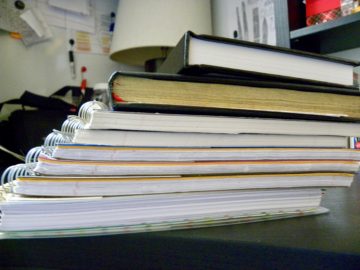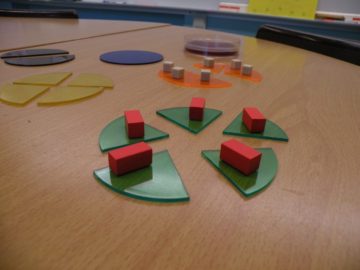The Math Curriculum class that I am taking this term is taught by a passionate math teacher and researcher. She has helped me reflect on not just why I want to teach math but also think deeply about being a teacher. The course is now in its last few weeks and today, I want to take the opportunity to elaborate on the wisdom I have received from her as well as the many avenues that she has opened for me on which I want to reflect more in the future.

My memories of Math
The last time I did math as part of a course was about three years ago. Math was an integral part of my education in school and in my undergraduate degree. I had many great math teachers in school and thinking about them now, some adjectives that come to mind are patient, caring, encouraging, and guiding. At home, my mom never missed an opportunity to tell me of the days in her youth that she spent doing math — it was her go to thing — and my maternal grandfather was always by my side to check my math sums and guide me if I needed any help. My paternal grandfather, though I did not get a chance to interact with him as much, was a mathematician and math professor. In all, I can say I was born into a family that loved and appreciated math, and I went to schools where the teachers were good at teaching math.

In India the new school year begins in April and in mid May-June, it is summer vacation. The summer holidays were always my time to do uninterrupted math. My grandfather encouraged it and I recall it like yesterday, going through the chapter on Integers on my own, completing all the questions in the book and showing them with pride to him. That was probably the first time when I taught myself something from a textbook. I remember many days of filling up registers with math questions and concepts. Practice, practice, practice.
I did well in math. I wasn’t perfect at it. I made mistakes. Sometimes I got distracted and miscalculated or miswrote something. But overall, it didn’t matter. I liked math and though it felt tedious sometimes to do so many questions (whether self assigned or given by a teacher), it was one subject that I could work on at my leisure — have music playing and fill up notebooks after notebooks. Nothing fills notebooks faster than math. 🙂
Rethinking my Math education
As preservice teachers who want to teach math, we have had discussions around teaching the subject, homework, asking questions and believing in students to come up with answers. We have learned about the types of mathematical understandings and what it means to be proficient in math. We have also been reading Jo Boaler’s (2015) book, Mathematical Mindsets. Following are the points that have resonated with me the most:
- We read an article by Skemp (2006) called “Relational Understanding and Instrumental Understanding” about relational and instrumental understanding in math — the former is knowing what to do and why, while the later is knowing the rules that have to be applied in order to solve questions. We often get the impression that math is about the instrumental understanding, partly because our knowledge of math remains limited to the book and partly because our knowledge and excellence is defined academically by the tests and the grades we get on them. Related to the kinds of understandings, there are also skills that one needs to be proficient in math, which are explored by Kilpatrick et al. (2001) in their book Adding It Up : Helping Children Learn Mathematics. Conceptual understanding is one of the strands of attaining proficiency. There are many great articles in this book and I aim to find time to read them in the next few months.
- Often the language that we use in math can be confusing. We were having a discussion around subtraction the other day. For a question like 472–295, we all grew up with the algorithm to “borrow 10”. Our instructor reminded us that we never give back the 10 we “borrow” and hence, the term is incorrect and quite confusing to a child who will make the connection to what borrow means in English. This reminded of a TED talk by Amiee Mullins around language — how language affects our thinking. If the use of language in a subject confuses us, we will generalize it to the whole subject being confusing.
- Math needs to be taught by addressing three kinds of representations of the concepts — concrete (using craft items or real world examples and manipulatives such as Base10 blocks), pictorial (using simple graphs and charts) and symbolical (in the form of equations or variables and numbers). By using all three representations, we will allow different kinds of learners to grasp the concepts and make the learning relatable. Math is all around us. It is the web a spider weaves, in a snowflake that falls from the sky, in the communication of dolphins and much more (Boaler, 2015)! There must be ways to bring these everyday things into the math classroom. Dan Meyer’s TED talk on the math curriculum is another great resource to get ideas. In the lesson plans we have made in class, we make it a point to include all three types.

- Math is often seen as the subject where mistakes are penalized and students become afraid of making mistakes. Boaler (2015) talks about encouraging mistakes and seeing them as an opportunity to learn. By asking students to share their mistakes and discuss their way of thinking, we welcome mistakes into the classroom. By designing lessons that focus on mistakes and misconceptions that students may have and anticipating them in advance, it is possible to emphasize mathematical thinking over final calculations.
- Feedback is useful to make mistakes from becoming misconceptions. I recently listened to a podcast by Jennifer Gonzalez about Joe Hirsch’s new book, The Feedback Fix, which I am looking forward to reading.
- Math practice or homework? We had a heated discussion around homework and practice. Many of us see homework as a needed part to ensure that students practice while also wanting to implement assignment based homework. We have also looked at reflective questions in homework rather than practice questions where the student has to create their own question or explain the concept in their own words. All are great ideas. Will we fall into the same kind of teaching practices that we grew up with or will we break barriers and do something new?
Helping out with Math
Not having grown up in Canada, I decided to go volunteer at a high school to get familiar with the schooling system as well as to brush up some of the concepts that I will teach. I had the opportunity to help a Grade 12 student with her calculus course. She had some great questions in trigonometry.

I was a little bit scared at first. It has been a while since I have done trigonometry but I was sure I could help her out. She had a book with her from which she was doing questions so even if I could not remember something right away, I could look it up. The book could guide my thinking and I could guide hers.
We did a variety of questions in the one hour I spent with her. Some were about proving formulae, others calculating the value of sin or cos of an angle using the formulae, writing a trigonometric expression in its simplest form and so on. She had a formulae sheet given to her by her teacher that we referred to for solving questions but the sheet by itself was insufficient to get the answers. As we worked together, she got more and more comfortable with my ability to help her and she started asking questions she did not understand the explanation of or had not done in class at all, for which there were no examples and nothing in her class notes to guide her.
She solved the questions by herself mostly. I supervised her and we ended up discussing strategies to solve the questions. Often she would apply a formulae and she would feel that the answer was becoming too complicated and I would either encourage her to “keep going, let’s see what happens” or “is there another way to do this?” Often she would skip steps and I would ask her to slow down and rewrite the missing step.
I asked her if the teacher assigned her all the questions from the book or she was doing them on her own. She said she was doing them on her own. It reminded me of the discussion around practice that I mentioned earlier — yes, we want our students to practice math and be able to do a variety of questions, and some will take it up on themselves to do all questions they can find because they want to, because they can and because they feel more confident when they have.
In that one hour, I recalled how I used to solve questions and that reaffirmed that math is not about the list of formulae but it is about the process of thinking through the solution, sometimes trying out many things to come up with the most intuitive one. It is also about moving forwards, knowing that if it doesn’t work out, there will be another way but while one is on certain path of thinking, it is best to complete it — to see it through to its end. We practice questions but honestly, we practice thinking. Some of it will get internalized and memorized to be stored in some part of the brain for access at sometime in the future. When I looked at the questions in front of me, I didn’t ask myself “now how to solve this type of question years ago?”, instead I drew upon my relational understanding of trigonometry, in general. It is not compartmentalized into 20 different kinds of questions or formulae.
And that is exactly what I will make sure my students understand. We will build mindmaps and concept maps, we will not build a cheat sheet to memorize in order to solve questions. We will have a formulae sheet for sure for sometime, but we will get away from it. We will learn not to rely on it and be confident enough to approach a question when we have not looked at such a sheet for years.
References and further reading:
- Boaler, J. (2015). Mathematical mindsets: Unleashing students’ potential through creative math, inspiring messages and innovative teaching. John Wiley & Sons.
- National Research Council, & Mathematics Learning Study Committee. (2001). Adding it up: Helping children learn mathematics. National Academies Press.
- Hirsch, J. (2017). The Feedback Fix: Dump the Past, Embrace the Future, and Lead the Way to Change. Rowman & Littlefield.
- Skemp, R. (2006). Relational Understanding and Instrumental Understanding. Mathematics Teaching in the Middle School,12(2), 88–95. Retrieved from link
Audio / Video resources:
- Gonzalez, J., & Hirsch, J. (2018, January 21). Moving from feedback to feedforward. The Cult of Pedagogy. Podcast retrieved from https://www.cultofpedagogy.com/feedforward/
- Meyer, D. (2010, March). Dan Meyer: Math class needs a makeover [Video file]. Retrieved from https://www.ted.com/talks/dan_meyer_math_curriculum_makeover
- Mullins, A. (2009, October). Aimee Mullins: The opportunity of adversity [Video file]. Retrieved from https://www.ted.com/talks/aimee_mullins_the_opportunity_of_adversity#t-10732
If you have any reading suggestions, please share! 🙂
What were your experiences with Math as a child? Is there a better way you feel you could have been taught Math? Share your thoughts through the contact form!

Be First to Comment